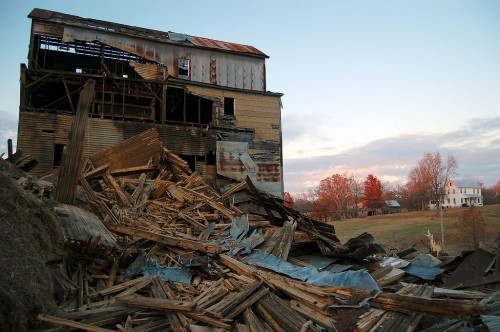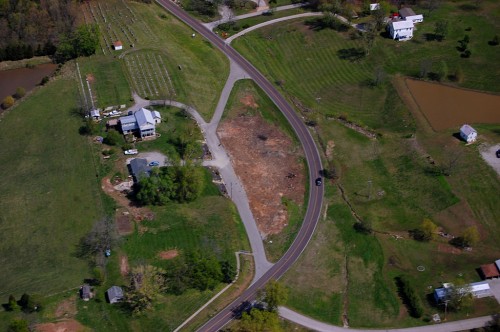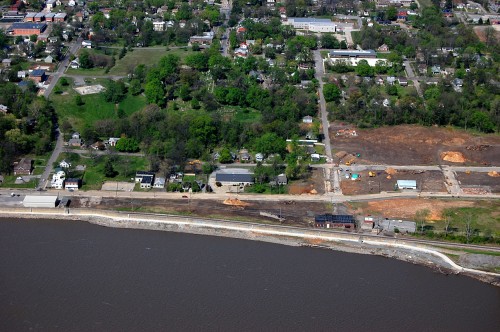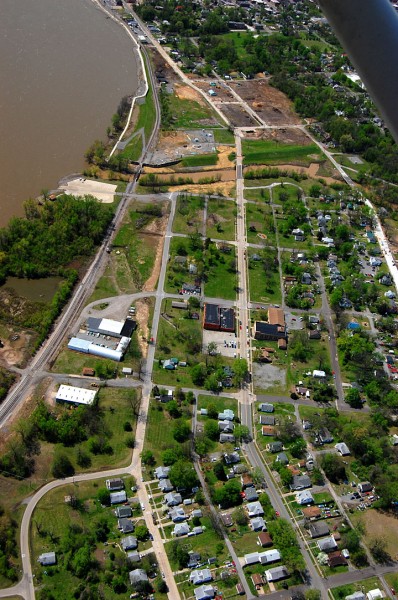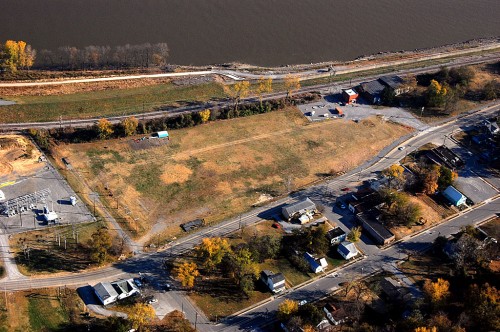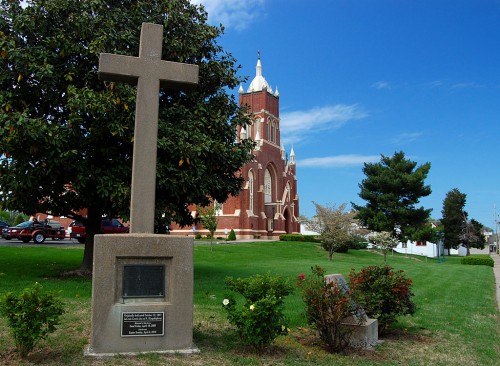 As long as I can remember, a simple concrete cross stood at the intersection of Kingsway Drive and Kingshighway. I have to admit that I knew it had to do with something historical, but I wasn’t exactly sure what.
As long as I can remember, a simple concrete cross stood at the intersection of Kingsway Drive and Kingshighway. I have to admit that I knew it had to do with something historical, but I wasn’t exactly sure what.
Still, it disturbed me that something that had been a Cape Girardeau landmark since 1947 would be displaced in 2009, so a commercial building could be built and some public land swapped around.
I was looking for a couple of other landmark monuments Thursday when I ran across my old friend, the cross, at the corner of William and South Main, on the grounds of the St. Vincent de Paul Catholic Church.
Cross relocated on Good Friday
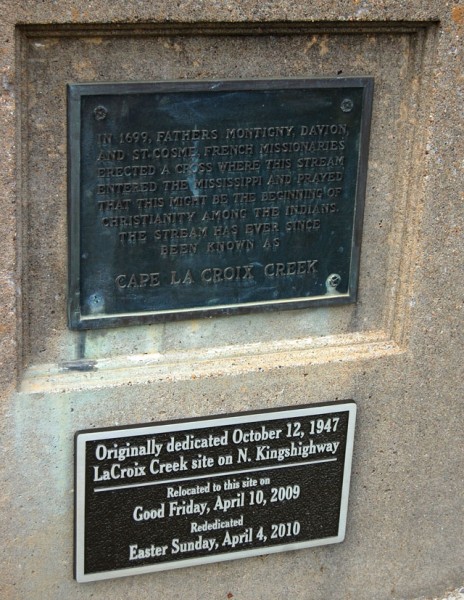 A new plaque says the monument was originally dedicated Oct. 12, 1947 at the LaCroix Creek site on N. Kingshighway. Relocated to this site on Good Friday, April 10, 2009 and rededicated Easter Sunday April, 4, 2010.
A new plaque says the monument was originally dedicated Oct. 12, 1947 at the LaCroix Creek site on N. Kingshighway. Relocated to this site on Good Friday, April 10, 2009 and rededicated Easter Sunday April, 4, 2010.
The original plaque says, “In 1699, Fathers Montigny, Davion and St. Cosme, French missionaries, erected a cross where this stream entered the Mississippi and prayed that this might be the beginning of Christianity among the Indians. The stream has ever since been known as Cape La Croix Creek.”
I find it interesting that one monument could have two different spellings for the name of the stream that it recognizes: Cape La Croix Creek and LaCroix Creek.
Kingsway and Kingshighway 1966
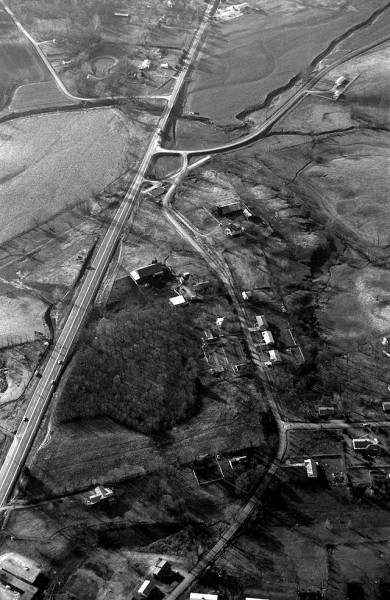 Kingshighway is on the left. Kingsway is on the right. At one time, the road that went by the names Old Jackson Road and 3-Mile Creek Road met Kingshighway at a 45 degree angle. State guidelines required that intersections should meet at 90-degrees, so the road was curved slightly to the west.
Kingshighway is on the left. Kingsway is on the right. At one time, the road that went by the names Old Jackson Road and 3-Mile Creek Road met Kingshighway at a 45 degree angle. State guidelines required that intersections should meet at 90-degrees, so the road was curved slightly to the west.
The monument was located in the dark brush area just west of the old intersection of Old Jackson Rd. and Kingshighway.
The area has changed drastically. Kurre Lane, at the bottom right, has been extended to Kingshighway and a fire station sits on the corner. The two farms and their barns have been torn down. The cow pastures we used to look over have homes planted on them.
Cross on St. Vincent’s grounds 2011
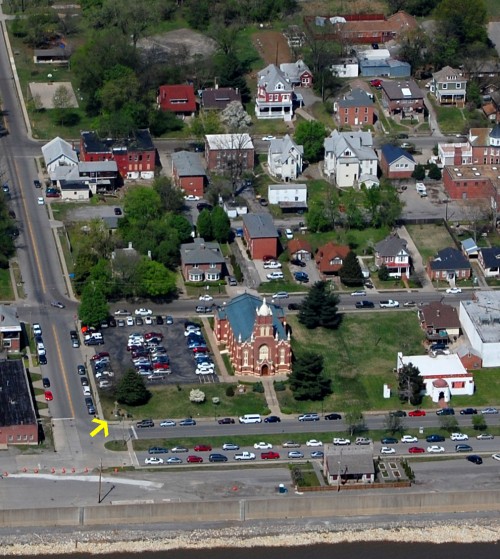 The cross now lives on the southeast corner of the St. Vincent de Paul Catholic Church grounds (marked by the yellow arrow). The Red House is at the bottom of the photo and the Jewish Synagogue is the white building with red trim on the lower right.
The cross now lives on the southeast corner of the St. Vincent de Paul Catholic Church grounds (marked by the yellow arrow). The Red House is at the bottom of the photo and the Jewish Synagogue is the white building with red trim on the lower right.
If the original intent was to mark the meeting of Cape LaCroix Creek and the Mississippi River, I guess the new location is probably about as close to the actual spot as the 1947 location.
Still, it bugs me that a landmark was uprooted for what appears to be someone’s commercial gain.
UPDATE Kingsway-Kingshighway in 2010
 Some folks asked what’s at the Kingshighway-Kingsway intersection today.
Some folks asked what’s at the Kingshighway-Kingsway intersection today.
Here is an aerial photo I shot Nov. 6, 2010. It’s almost easier to list what’s NOT there. A Plaza Tire store is about where the cross stood. The large building complex at the bottom is the Osage Center; the new water park was under construction to its right. Storage units and a housing development cover what used to be two farms and their fields.


